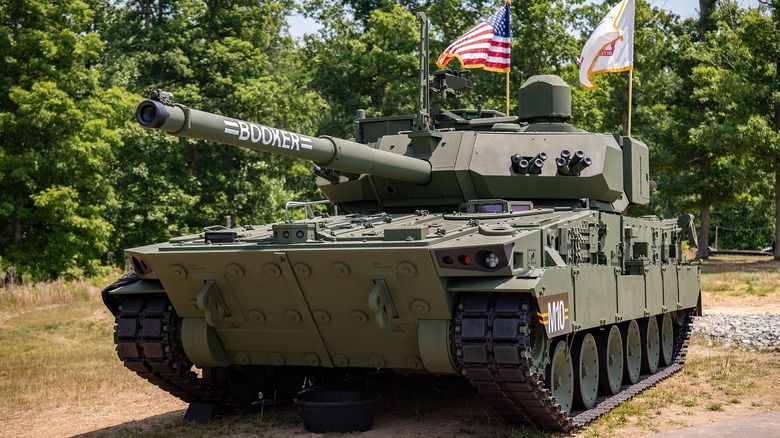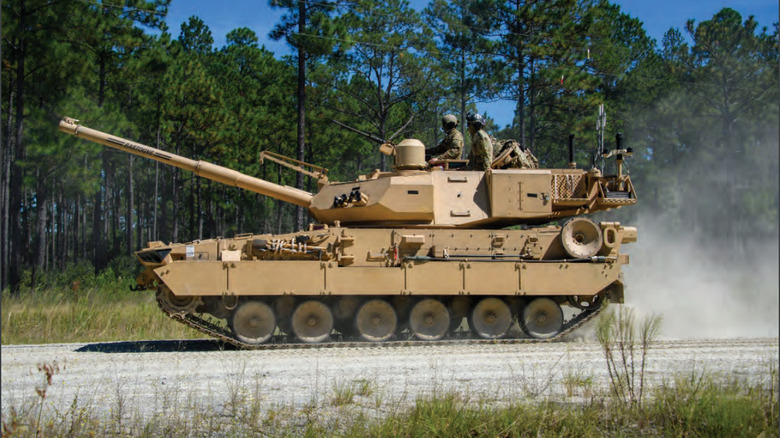M10 Booker: Why This New U.S. Army Vehicle Is Turning Heads
To paraphrase a famous quote from William Shakespeare's Hamlet, "To be a tank, or not to be a tank, that is the question."
The M10 Booker is the first new armored fighting vehicle the Army has unveiled in four decades. When the US Army first announced the Booker, it was tagged with a Mobile Protected Firepower moniker. The highly maneuverable vehicle could roll in with and support infantry troops directly on the ground. This new concept was referred to as a light tank.
When it was shown to the public in June 2023 during the Army's 248th birthday festivities, its designation had mysteriously changed to Combat Vehicle, and the light tank reference was dropped completely. It was quickly pointed out that the Booker was not a light tank at all because of two very distinct differences. First, it didn't have the same level of armor protection most true tanks did, and its primary mission was to support troops, not go head to head with other tanks like the legendary Abrams was designed to do.
Speaking of the Abrams, retired General Robert B. Abrams, son of four-star general Creighton "Abe" Abrams, after whom the famous tank is named, said after seeing the Booker, "This is a tank."
So, why the argument? Simply put, the Army ditched the "tank" designation to keep military personnel from thinking it was one and subsequently deploying it as such instead of using it for its intended purpose of supporting troops.
[Featured image by Bernardo Fuller via Wikimedia Commons | Cropped and scaled | CC BY Public Domain]
The Booker will be maneuverable and pack a punch
Both the Booker and Abrams are made by General Dynamics Land Systems, so they look somewhat similar in that they're both fully tracked armored fighting vehicles (AFV) operated by a four-person crew. Both have fully traversable 360-degree turrets and while the Abrams has a 120 mm cannon, the Booker has a 105 mm main gun.
Each AFV fires shells specifically designed to penetrate armor, but the Booker can carry a wider variety of munitions. Also, both have compartmentalized shell storage to help minimize the possibility of exploding should the turret get hit, unlike Russia's tanks currently used in the Ukraine.
Their similarities allow crew members familiar with one to operate the other without much of a learning curve. However, the Booker is much smaller, has far less armor, and only weighs 42 tons compared to the Abrams, which weighs over 73 tons. The lighter weight allows two Bookers to be transported aboard a C-17 Globemaster cargo plane simultaneously, whereas only one Abrams can.
The lighter weight and maneuverability of the Booker allow it to be deployed quickly and provide armor support to ground troops in areas like forests, jungles, cities, and other places where the Abrams simply can't operate.
An advanced computer targeting system uses a laser to acquire the exact distance to a target, even taking into account both the target and the Booker's movements. The AFV also has a thermal night vision viewer so the tank commander can see in multiple directions and acquire targets independently for the gunner.
Supporting ground troops with armor
While the Abrams gas engine burns 12 gallons an hour at idle, the 800 hp diesel engine on the Booker has a 24-hour range with a top speed of 40 mph. Its engine sits in front and theoretically provides additional protection to the crew. In contrast, the Abrams has a tremendous amount of armor up front, with its engine positioned in the back.
Its development didn't come without some issues, though. At one point high levels of toxic fumes were found to build up inside after the main gun was fired. This has since been resolved.
The Booker is named after two enlisted Army Soldiers and is the Army's first vehicle to honor a soldier who fought in a war after 9/11. Pvt. Robert D. Booker died in World War II and received the Medal of Honor, while Staff Sgt. Stevon A. Booker was killed during Operation Iraqi Freedom and was awarded the Distinguished Service Cross.
The first M10 battalion is scheduled to begin operational testing in late 2024 or early 2025, and the Army is slated to buy 504 vehicles by 2035 at about $13 million per AFV. That unit price will likely decrease as more orders come in, and production ramps up. A new Abrams tank costs around $10 million, but a direct comparison isn't fair because the Booker is a from-scratch new build while the Abrams has been in production for years.
[Image by U. S. Army via Wikimedia Commons | Cropped and scaled | CC BY Public Domain]

